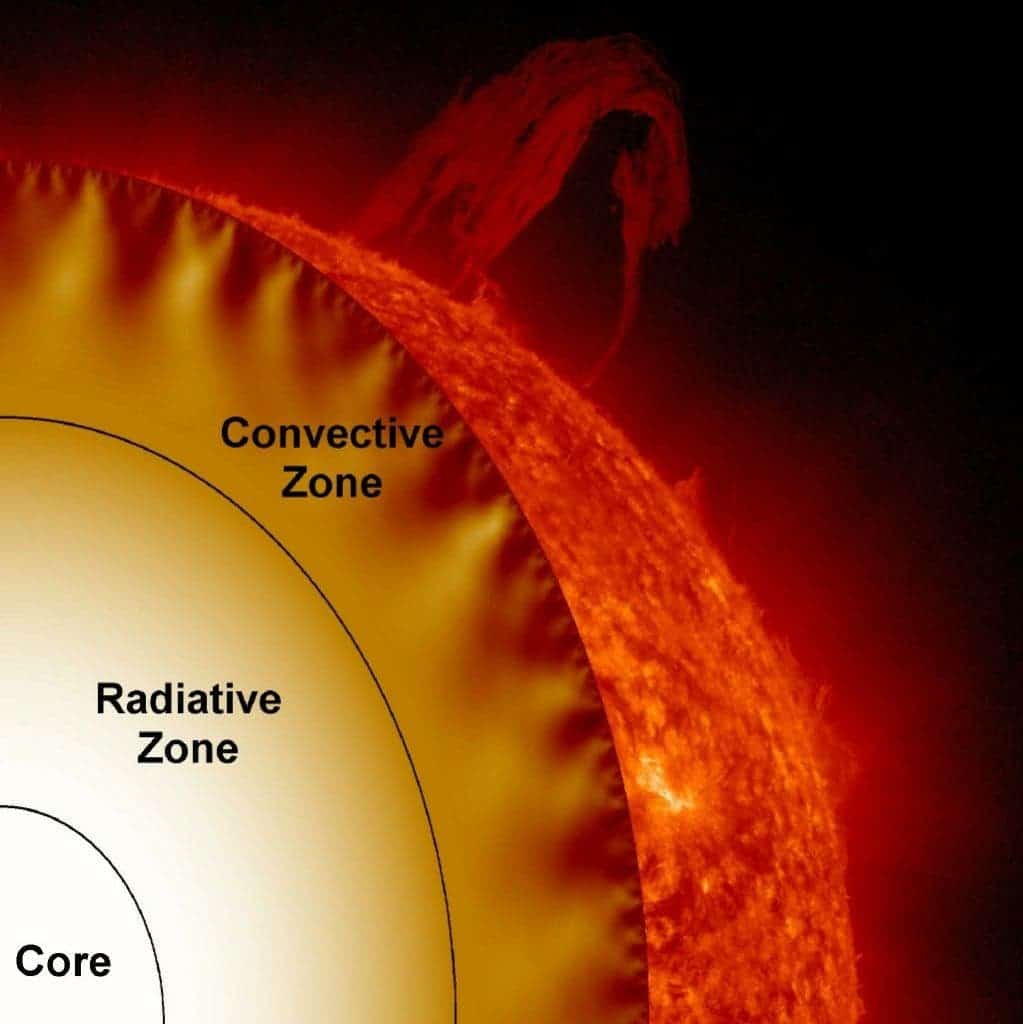We don’t know much about the early history of the sun but a surprising discovery might change that. According to an international team of astronomers, the sun’s core actually spins four times faster than its surface.

Previously, astronomers presumed the core was simply rotating at the same pace with its surface like a unitary body. What happened instead though was that solar wind steadily slowed down the rotation of the outer part of the sun.
“The most likely explanation is that this core rotation is left over from the period when the sun formed, some 4.6 billion years ago,” said Roger Ulrich, a UCLA professor emeritus of astronomy, who has studied the sun’s interior for more than 40 years and co-author of the study that was published today in the journal Astronomy and Astrophysics.
“It’s a surprise, and exciting to think we might have uncovered a relic of what the sun was like when it first formed.”
The sun is actually comprised of four distinct layers. Energy is generated in the core, the innermost one, then blasts outward by radiation (mostly gamma-rays and x-rays) through the radiative zone and by convective fluid flows (boiling motion) through the convection zone, the outermost layer. The thin interface layer (the “tachocline”) between the radiative zone and the convection zone is where the sun’s magnetic field is thought to be generated.
Ulrich and colleagues learned this after they studied surface acoustic waves that hit the sun’s surface, some of which also penetrated the core. Once at the core, the acoustic waves interact with gravity waves whose motion resembles water bouncing back and forth in a half-filled tanker truck taking a curve. This interaction ultimately revealed the sloshing motions of the solar and by accurately measuring the acoustic waves, the team found out the time required for the waves to travel from the surface to the core and back.
This effort required 16 years of coordinated action by many research institutes to bring to fruition. Since two decades ago, some scientists have been proposing that the sun’s core rotates slower than its surface but it was only recently that the tech enabled an investigation. Instruments like GOLF (Global Oscillations at Low Frequency) on a spacecraft called SoHO proved to be essential, for instance.
It makes sense that the core and the surface of the sun can have such dissimilar properties. For one, the core — where nuclear fusion occurs — has a temperature of 15.7 million Kelvin while the surface is far, far colder measuring only 5,800 Kelvin in temperature. And as an interesting trivia — just to get an idea of the complexities involved in the many layers between the core and surface of the sun — by the most recent estimates, it takes about a million years for photons forged in the core to escape through the surface. From there, it only takes them eight minutes to reach Earth.
The findings appeared in the journal Astronomy & Astrophysics.



